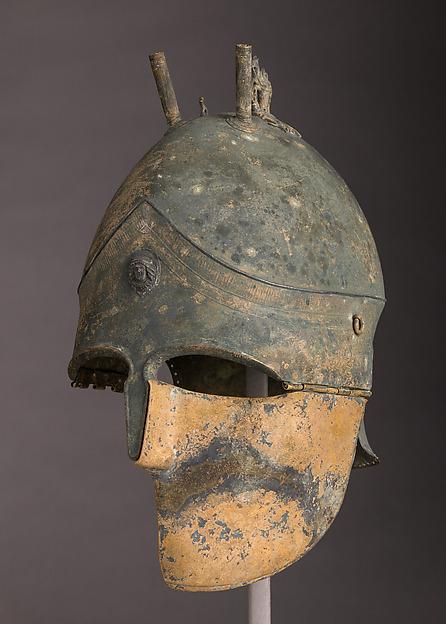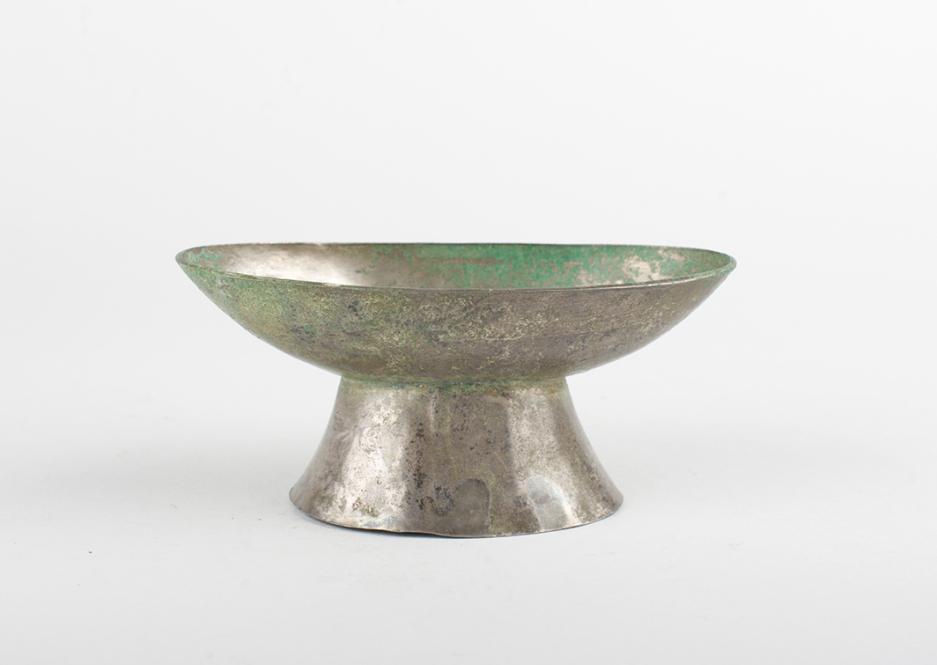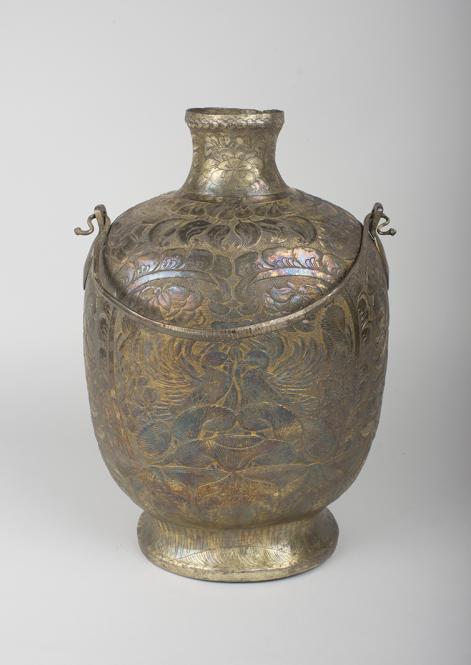2017.228a–d

Object Title
Helmet, Cuirass, and Greave
Measurements
Helmet: H 13 in. (33 cm); W. 8 11/16 in. (22 cm); cuirass: H. 19 11/16 in. (50 cm); W. 13 13/16 in. (35 cm); greave: H. 18 1/8 in. (46 cm)
Creation Date
late 5th–4th century B.C.
Credit Line
Purchase, Louis V. Bell, Harris Brisbane Dick, Fletcher, and Rogers Funds and Joseph Pulitzer Bequest and Arthur Ochs Sulzberger, Mr. and Mrs. Ronald S. Lauder, Friends of Arms and Armor and Malcolm Hewitt Wiener Foundation Gifts, 2017
Museum Name
Culture
Country of Origin
Object Type
Materials / Techniques
Object URL
http://www.metmuseum.org/art/collection/search/748484
Provenance Information
Reportedly acquired from Paul Munro-Walker, Bornemouth, Dorset, Great Britain, by Virgilo Constantino Vecchi, Vecchi & Sons, London, in the 1960s; sold to Private Collector, Switzerland, 1972; purchased from Private Collector, Switzerland, through dealer Plektron Fine Arts A. G., Zurich, by The Metropolitan Museum of Art, 2017.
Exhibition Information
The cuirass was on long-term loan to, and on display at, The Museum of Art and History, Geneva, Switzerland, from 2001 to 2015. The helmet was on loan to the Glyptothek Museum, Munich, Germany, from 2005 to 2015.
Publication Information
Unpublished
Section of the AAMD Guidelines relied upon for the exception to 1970
Informed judgement that works were outside of the country of modern discovery before 1970
Explain why the object fits the exception set forth above
This work has provenance to 1972 when it was acquired by a private collector in Switzerland who sold the work to the Metropolitan Museum. It has provenance reported to the late 1960s but the Metropolitan Museum has been unable to independently verify that information. The cuirass was on loan to the Museum of Art and History, Geneva, Switzerland, from 2001 to 2015. The helmet was on loan to the Glyptothek Museum, Munich, Germany from 2005 to 2015.
This is a one of the most distinctive and best preserved Etruscan panoplies surviving from the 5th century B.C. It would be the only complete or near-complete Etruscan armor in the Metropolitan Museum's collection. It is comprised of an exceptional helmet, a finely modeled muscle cuirass, and a single greave. The ensemble is remarkable for its topological singularities, ornamentation in silver, and overall state of preservation. Noteworthy features on the helmet include an applied silver gorgon and a bronze crest representing Pegasus. The breastplate and backplate stand out for the sensitive sculptural treatment of the anatomy.
This is a one of the most distinctive and best preserved Etruscan panoplies surviving from the 5th century B.C. It would be the only complete or near-complete Etruscan armor in the Metropolitan Museum's collection. It is comprised of an exceptional helmet, a finely modeled muscle cuirass, and a single greave. The ensemble is remarkable for its topological singularities, ornamentation in silver, and overall state of preservation. Noteworthy features on the helmet include an applied silver gorgon and a bronze crest representing Pegasus. The breastplate and backplate stand out for the sensitive sculptural treatment of the anatomy.






